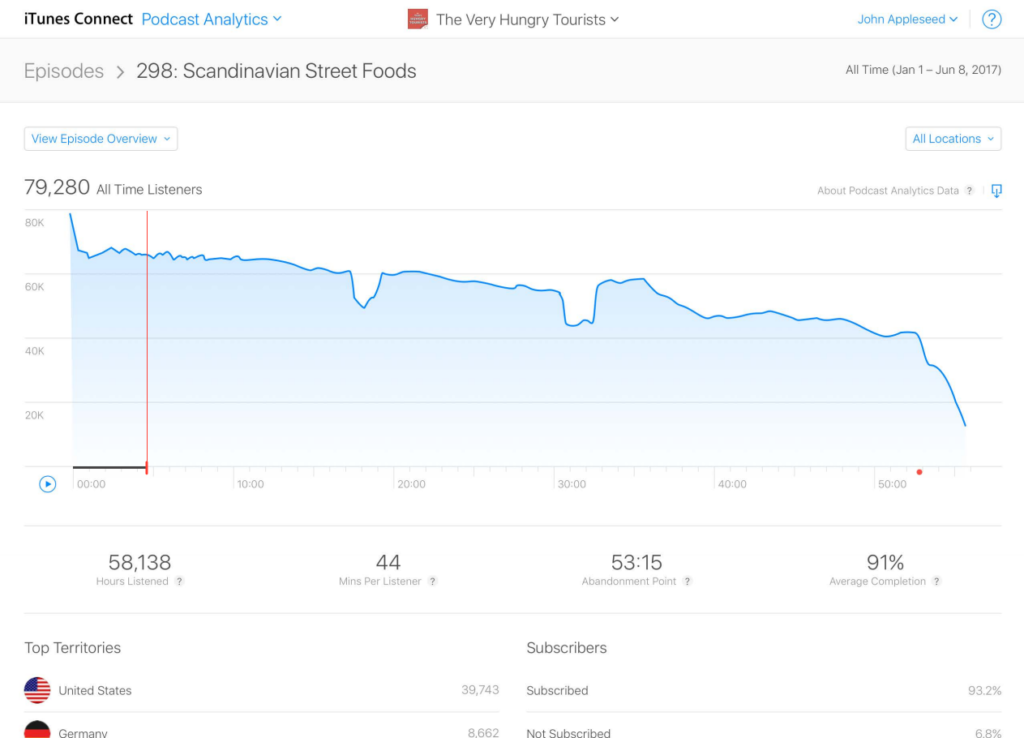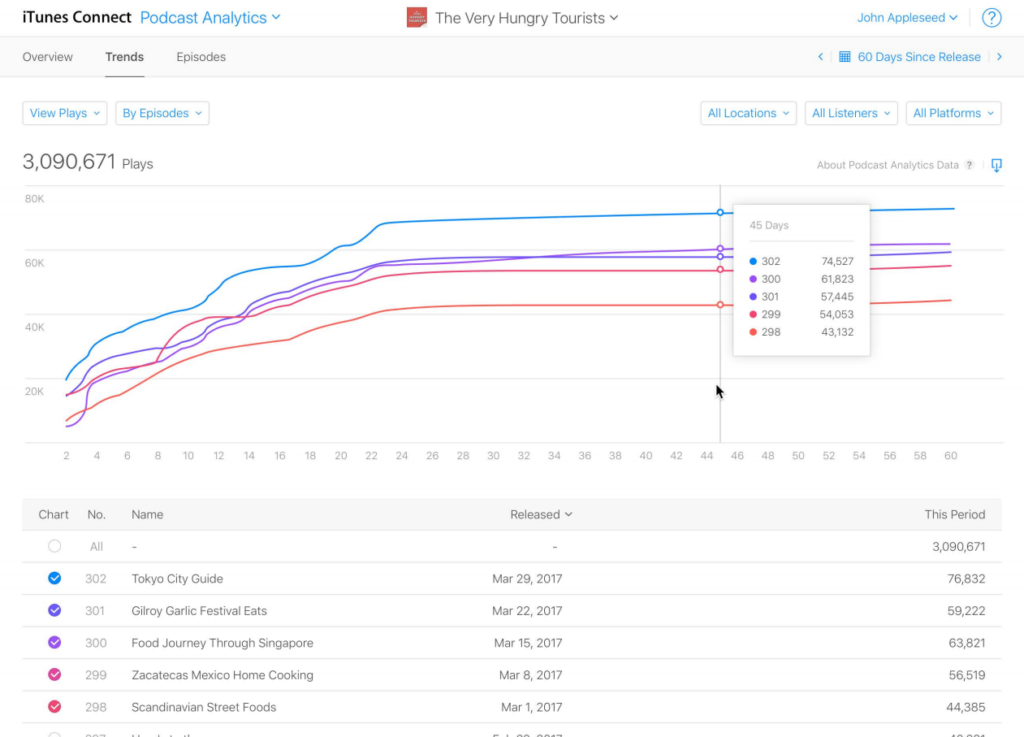At last week’s WorldWide Developer Conference, James O. Boggs, Business Manager of Apple’s podcast division, announced that Apple will introduce podcast consumption analytics later this year. The announcement was tucked quietly onto the end of a long session of WWDC speeches, masking its importance as a much-needed, long-awaited decision by Apple that some industry insiders believed might never come.
“We get excited about episodic, long-form content that entertains, informs, and inspires,” Boggs said in a measured, 25-minute address. Before getting to the analytics part, Boggs rattled off some metrics that define the scope of Apple’s stake in the podcasting realm:
- 400,000 shows in Apple’s distribution system comprised of iTunes and the Podcasts mobile app
- 1,000 new shows submitted each week (no doubt giving pause to aspiring new creators)
- Fourteen million episodes are available
- Content in over 100 languages from 155 countries
Most estimates of Apple’s distribution footprint say that 65-70 percent of listening happens through Apple’s ecosystem — hence the years-long need for more intelligence about how people listen. The upcoming analytics will describe anonymous usage in metrics categories that go beyond mere downloads to in-show drop-off and skipped portions. The screenshots below offer a preview of how granular the analytics might be. The next point of interest will be when the product is launched and all stakeholders can see what Apple is defining as the metrics currency for the next phase of podcast growth.
“So many questions about audience and usage; what could we do to help?” — James O. Boggs, Apple
The information will certainly help define the podcast marketing opportunity to advertisers. The greater visibility into consumer listening tendencies could especially help national brand advertisers understand podcasting better, and — ideally from the publisher viewpoint — start allocating some of their audio budgets to podcasts and their unique attributes.
Below are two screenshots from the presentation, which is available for watching here. (Apple’s slides are here.)


